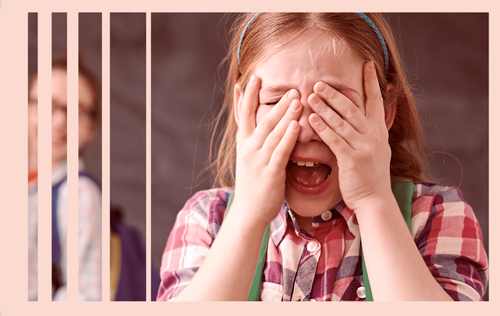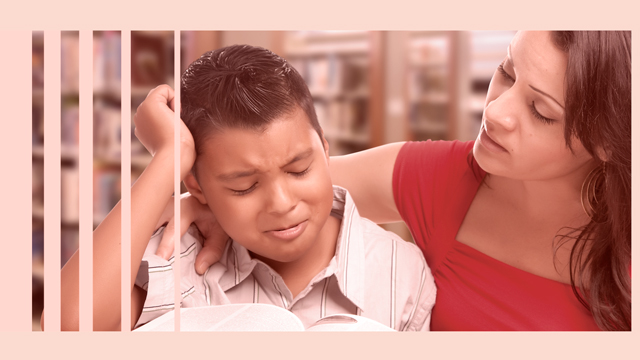Last spring, my son played coach-pitch baseball for our county’s recreational team. The boys, mostly 8- and 9-year-olds, were hard workers and frequent criers. Some burst into tears after a strikeout or when the opposing team scored a run. Others cried if they didn’t get a chance to bat during a given inning.
I could understand the coach’s frustration one game by the time the third or fourth child returned to the dugout in tears. It definitely makes a coach’s job more difficult if he must first calm down the players before they can take their positions in the outfield. I can’t say I agreed with his response, though. The coach placed his hands on one child’s shoulders and said, “You need to stop crying. Crying doesn’t solve anything.”
Benefits of Crying
Crying, though often loud, awkward, and difficult to watch, serves many purposes, including – but not limited to – communication, processing, getting support from others, enhancing mood, relieving discomfort, and releasing toxins.
As adults, let’s remember that as babies, crying was our initial means of communication. Before we were able to attach words to our emotional needs, we communicated by crying. As a result, we were fed, changed, comforted, and held. While we expect children to communicate through words once they learn to talk, this can be a rather slow progression.
Isn’t it a bit unfair for us to expect children to know how to verbally express their needs when many adults struggle with this concept? Emotional regulation is an important aspect of development, and children cry more easily because they are still honing this skill and learning to express and manage negative emotions.
The benefits of crying are not exclusive to children. Crying releases cortisol, a stress hormone, and endorphins, the body’s feel-good chemicals, which can result in a mood boost. In addition to biological benefits, crying can also help an individual in a social context by attracting attention and garnering emotional support.
What Not To Do
Most parents have witnessed the horror of a child’s public crying spell. Whether the child is sobbing on the baseball field or in the middle of a restaurant or grocery store, we can all relate to the discomfort and embarrassment of this scenario. What should we do when this happens? Or, what should we definitely not do?
In short, we must not shame or attempt to silence our children. We also don’t punish or ridicule children for expressing their raw feelings, especially in public.
As parents, we struggle with allowing children to cry in public settings. We tell ourselves that it’s inappropriate, and of course, we worry about the responses from onlookers. But our concerns should surround our child’s emotional state and not the reactions from individuals around us.
This is an incredibly challenging aspect of parenting, though. Imagine (you likely don’t have to) your child sobbing uncontrollably in the middle of a quiet restaurant. Your first instinct may be to distract your child in hopes that he will quiet down. More often than not, the distraction is ineffective and your child’s howls increase in volume. People stare and you sense judgment from all directions, so you try to silence the child. “Stop,” you say to your child. “Please stop crying!” But he doesn’t. And whether you whisper it firmly or raise your voice, the crying only becomes louder.
Why? Your child is attempting to send you a message, and if you don’t hear it initially, the messenger will increase his volume until you do.

What We Can Say When a Child is Crying
It’s critical that parents not shush or attempt to distract a crying child, even though quieting him down might be tempting, especially in a public setting. Instead, try to offer supportive and accepting comments like the following: “I’m here for you,” “It’s okay to feel like this,” “I’m sure that was very disappointing,” and “Tell me about it when you are ready to talk.”
Additionally, experts I spoke with recommend reflecting and validating the child’s experienced emotion. We can reflect the emotion by saying, “You are very hurt/sad/disappointed.” And an example of validating the emotion is, “It makes sense that you feel sad about striking out.” After acknowledging the emotion and expressing understanding, offer a coping strategy, like taking a break or deep breathing. By connecting words to our child’s emotions, we are reassuring him that the expressed feelings are valid and understandable.
Why Shaming Isn’t a Good Idea
As a society, we have done a pretty terrible job of dealing with tears. We often associate crying with negative expressions such as being “reduced to tears” or acting like a “cry baby.” Shameful messages about crying have been a part of our pop culture for decades. In the 1962 hit, “Big Girls Don’t Cry,” recorded by The Four Seasons, the group sang: “Shame on you, your mama said. Shame on you, you cried in bed…” More recently, recorded in a song with the same title, Fergie shared the same sentiment: “… it’s time to be a big girl now, and big girls don’t cry.”
We have to move past the misconception that crying is shameful or babyish. When we stifle crying, we inadvertently send the message that it’s not acceptable to feel sad or disappointed. When we do this, we teach kids to deal with their emotions in potentially dangerous ways, which could result in aggression or depression. We must strive to connect with our kids, let them know that all emotions are okay, and help them learn appropriate ways of managing those emotions.
What About Big Boys?
It’s bad enough for “big girls” to cry, but what about “big boys”? Unfortunately, many boys have been taught that crying is a sign of weakness and a reason for shame. Many males learn this by adolescence, and as a result, begin to suppress their emotions or express them in ways that are perceived to be more suitable for their gender roles.
Overall, though, society is making great strides in terms of male tears and the stigmas associated with them. Archaic gender roles are loosening and sensitive males are more widely accepted in very public roles, such as actors, politicians, and athletes. During the NCAA men‘s basketball tournament, I was impressed to see countless young men comfortable with sharing the disappointment of loss by shedding tears.
At a recent writing conference, I attended a session during which literary agents discussed what they found interesting in the first few pages of a new work, as well as what could instantly land the author’s pages in the slush pile. “Anything that presents an emotional male character in a negative light is an automatic no for me,” one agent said. “I consider myself to be in touch with my emotions, so referring to a crying male as a ‘sissy’ will keep me from reading further.”
The music world seems to be echoing this sentiment with more songs being written and recorded on the topic of men who cry like Chris Stapleton’s, “Sometimes I Cry” and Tim McGraw’s “Grown Men Don’t Cry.” Though the title of the latter sounds contradictory, the song is actually about the powerful and heartbreaking moments in a man’s life that bring him to tears.
The Connection Between Emotions and Learning
While there is still room to grow, we are doing better with stigmas of emotional responses as a society. Not only are tears becoming more socially acceptable, but recent research also suggests emotional connections are essential to learning. David Brooks, an opinion columnist for the New York Times, recently published a piece titled, “Students Learn From People They Love.”
In the article, Brooks recalls a time in his career as a professor when he told his students he was “dealing with some personal issues.” That was all he said, but it was more than enough to change the tone of his class for the remainder of the term. Because of his admission of vulnerability, students emailed him to express their concern. He became real to them and they became closer.
The idea of emotional people being irrational is outdated at best. Brooks considers the work of cognitive scientists like Antonio Damasio and reminds us, “Emotion is not the opposite of reason; it’s essential to reason. Emotions assign value to things. If you don’t know what you want, you can’t make good decisions.”
Perhaps we can keep this in mind the next time our child sobs on a playing field. It isn’t a sign of weakness or misbehavior, it’s a manifestation of what he wants, of what’s important to him.
And as parents, we can take advantage of this situation and connect with our child and help him learn ways to manage emotions – even the ones that are perceived as negative. Perhaps, we can use this as a golden opportunity to turn a strikeout on the field into a
parenting homerun.




